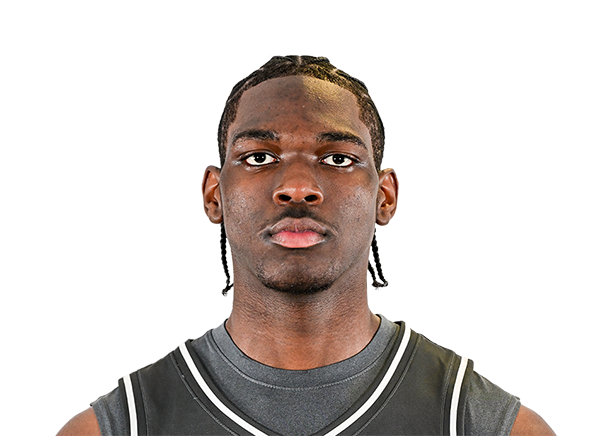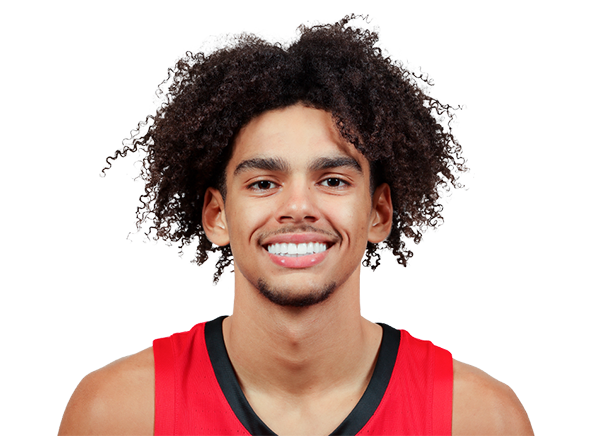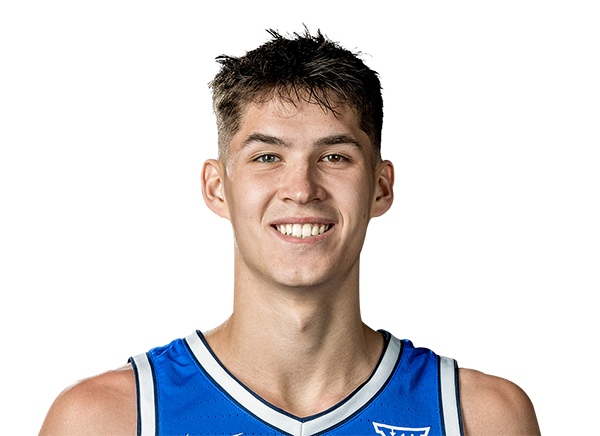Full Analysis
Offense
Fleming’s offensive profile is entirely rooted in play-finishing, energy, and floor-spacing, not self-creation. While often labeled as a stretch four, he functionally plays closer to a small-ball big, doing most of his damage off the ball as a vertical athlete, rebounder, and opportunistic shooter. His best offensive stretches come when he’s not asked to dribble or create, but rather to fill lanes, space the floor, and attack the glass.
His most intriguing swing skill is his three-point shooting. After shooting 31.3% from deep over his first two college seasons, Fleming broke out as a junior, hitting 39% from beyond the arc on increased volume. Much of that success came on unguarded catch-and-shoot opportunities, particularly from the corners or trailing in transition. His high release and compact mechanics suggest translatability as a spot-up shooter, and his willingness to let it fly adds value in pick-and-pop actions. However, his accuracy dipped significantly when contested, and his 67.8% mark from the free-throw line raises legitimate concerns about the long-term sustainability of his jumper. While the form is repeatable, the touch isn't consistent,especially under pressure, which makes it uncertain whether his shooting will hold up against NBA closeouts or in tighter windows.
Aside from the shooting, Fleming plays with the hustle and physicality of a true big. He averaged nine rebounds per game and showed some of the best rebounding hands in the class. His ability to carve out space, secure contested boards, and generate second-chance points with quick, explosive leaps makes him a constant presence around the rim. He thrives off energy plays: crashing from the perimeter, cleaning up misses with putbacks, and finishing plays with power. These skills allow him to stay productive even without touches being drawn up for him.
Still, Fleming’s offensive limitations are real. He lacks any sort of isolation or post-up game, and he’s not comfortable creating off the bounce. His handle is loose, particularly going left, and he struggles to convert when asked to drive against a set defense. His 36.8% shooting on drives is underwhelming given the level of competition in the Atlantic 10. He rarely passes on the move and doesn’t demonstrate vision as a short-roll decision-maker or connective piece. His offensive ceiling is tightly bound to his role as a finisher, shooter, and rebounder, not as a creator or secondary playmaker.
Defense
Fleming’s most projectable NBA skill set lies on the defensive end. He’s a chaotic, high-energy defender with the tools to make plays all over the floor. With a 7’5” wingspan, explosive leaping ability, and constant activity, he was a disruptive force in the Atlantic 10, averaging 1.6 blocks and 1.4 steals per game.
His rim protection comes primarily from weakside help, where he uses his length and timing to contest shots from the second line. He’s an explosive two-foot leaper who can meet opponents at the summit, even when rotating late. His presence forces quick decisions from drivers and deters easy finishes around the basket. Fleming also adds value defending in space, showing the mobility to switch onto multiple positions in spurts. He can hedge or switch screens, cover ground quickly in recovery, and close out with real length.
However, he’s not a complete defender just yet. His feel for the game on this end is still developing, as he can be overeager chasing blocks or ball-hawking, which opens up backdoor cuts or late rotations. His processing speed lags at times, particularly in more complex off-ball actions or when guarding multiple actions in quick succession. He can get caught ball-watching or mistiming help responsibilities, and his discipline in pick-and-roll coverage remains inconsistent.
Still, his sheer motor and tools allow him to compensate for many of these issues. He has real potential as a play-disrupting, event-generating big who doesn’t have to anchor a defense but can fly around as a high-effort rotational piece. Whether defending at the rim or switching onto smaller players, Fleming brings a level of activity that fits well in modern defensive schemes built on switching and help-and-recover concepts.
Looking Ahead
Rasheer Fleming enters the NBA as a hybrid big: part rim protector, part shooter, and part chaos agent. He may be framed by some as a stretch four, but his tools, impact, and role fit more cleanly in the mold of an energy big, someone who plays the five in smaller lineups or alongside a more skilled offensive creator at the four.
If his three-point shot proves legitimate and his defensive effort remains consistent, Fleming offers plug-and-play utility as a floor-spacing, shot-blocking big with elite rebounding instincts. If the jumper regresses or fails to translate against NBA length and speed, his offensive impact becomes far more reliant on hustle and glasswork, limiting his lineup flexibility.
There’s no evidence of untapped upside as a creator or on-ball threat, but what he does bring in spacing, rebounding, energy, rim protection is valuable in a low-usage role. For teams in need of versatile frontcourt depth with defensive range and enough shooting to stay on the floor in high-leverage minutes, Fleming fits the bill. His game may not be flashy or complex, but if the shot sticks, the simplicity becomes a strength.



